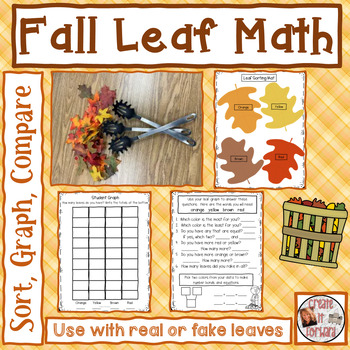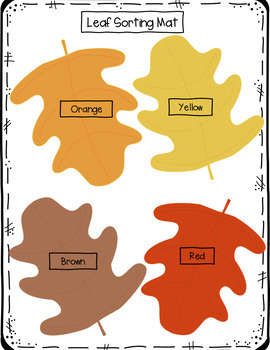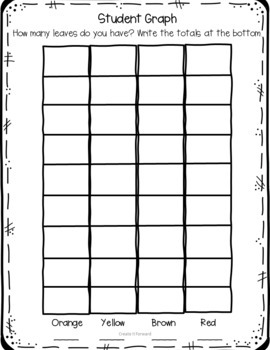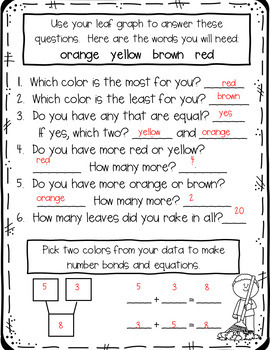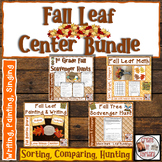Fall Leaf Sorting, Graphing, and Comparing Math Center
Also included in
- This bundle is all you need for some fun Fall leaf center activities. It includes a painting craftivity, some creative writing, a bulletin board, sorting, graphing, and comparing activities with real or fake leaves, an outdoor fall tree scavenger hunt, a song, and four scavenger hunts that review sPrice $5.00Original Price $6.50Save $1.50
Description
Get your primary students into fall by having them rake, count, sort, graph, and compare fall leaves as a fun fall math center. You can use this with real leaves or purchase fake ones to let them rake and count. There is also an original song teaching about tree parts and their purposes.
Product Includes:
* Explicit directions for use-including pictures
* Two leaf sorting mats (color and black & white)
* Leaf graph for students to complete
* Sample leaf graph completed
* Question page comparing collected data
* Sample answers about data
* "Tree Parts" song lyrics (color and black & white)
* "Tree Parts" song movements
This product is designed to use with a small group as a center (so that you don't have to have as many leaves) but can also be used as a whole group or individual activity. The song can be used in small or large groups and can be added to Independent Reading Binders.
Proceeds from this store go to scholarships for new teachers. Please help me Create-It-Forward!

